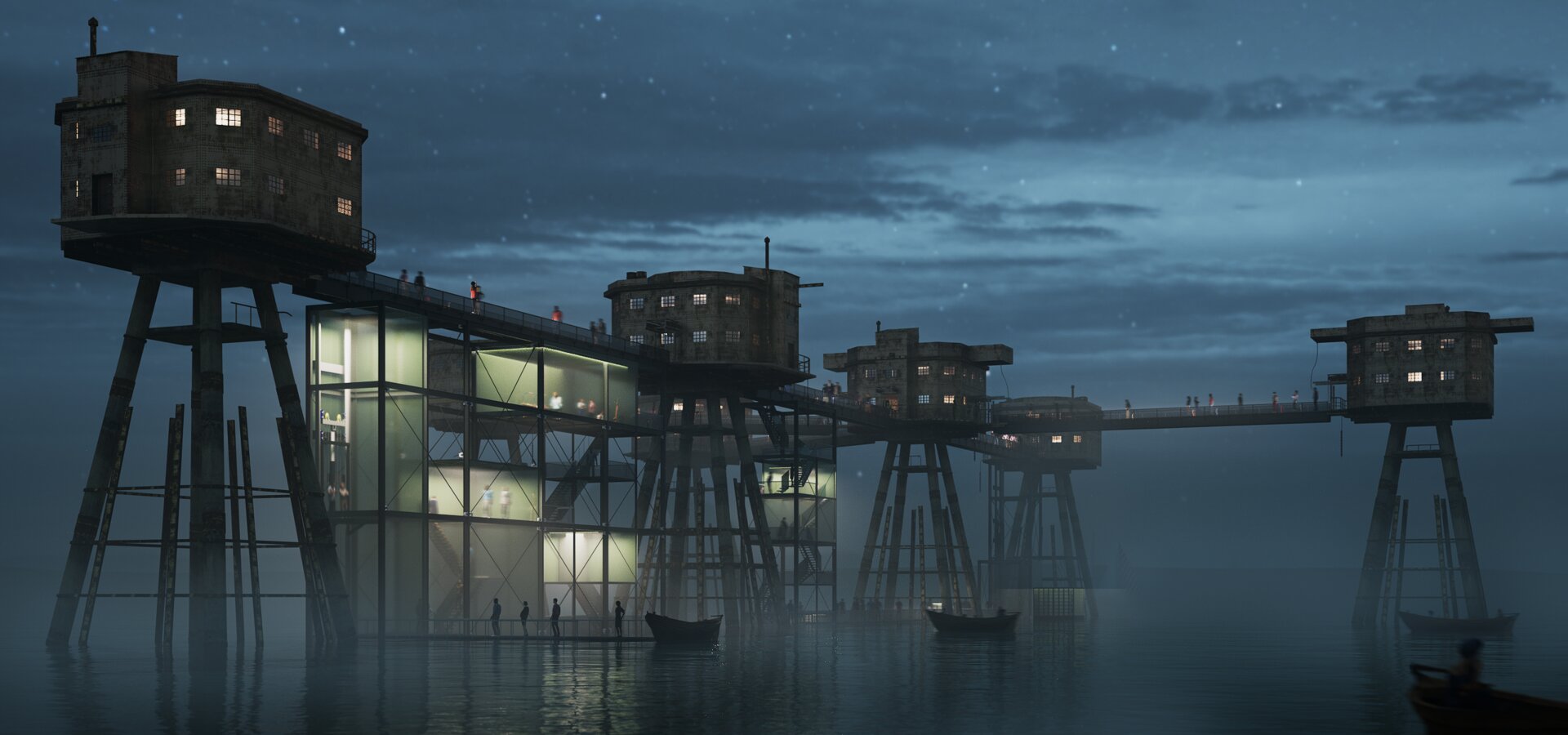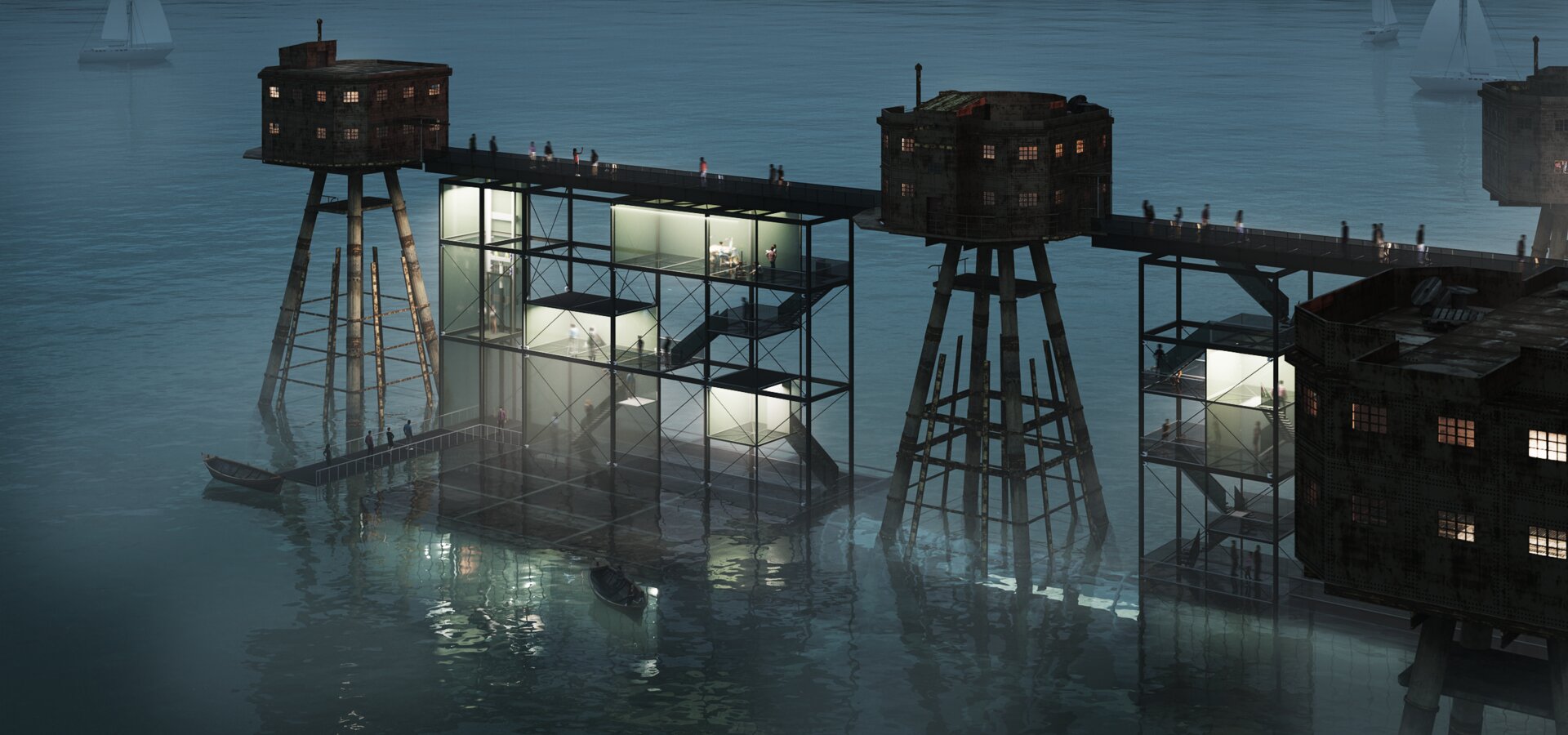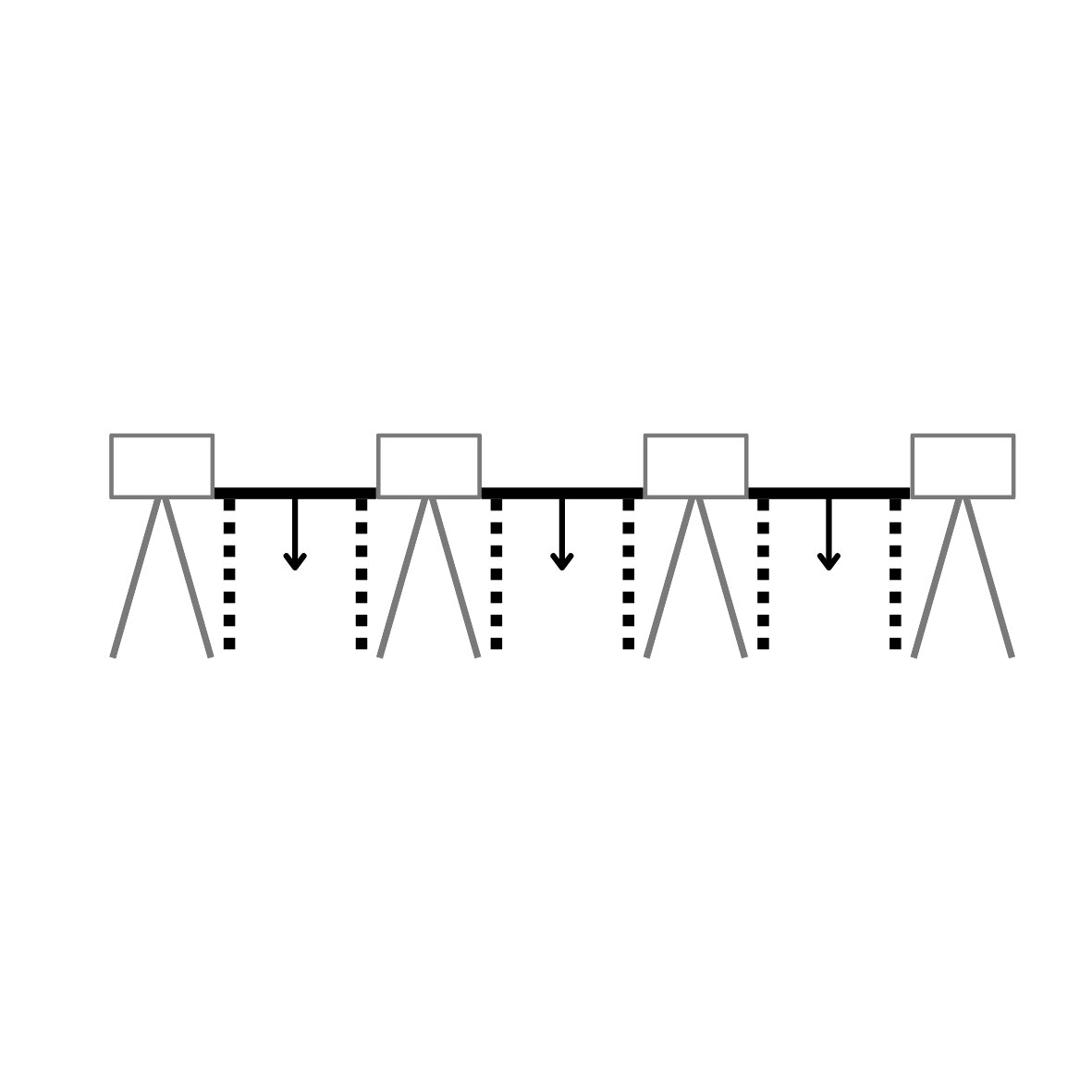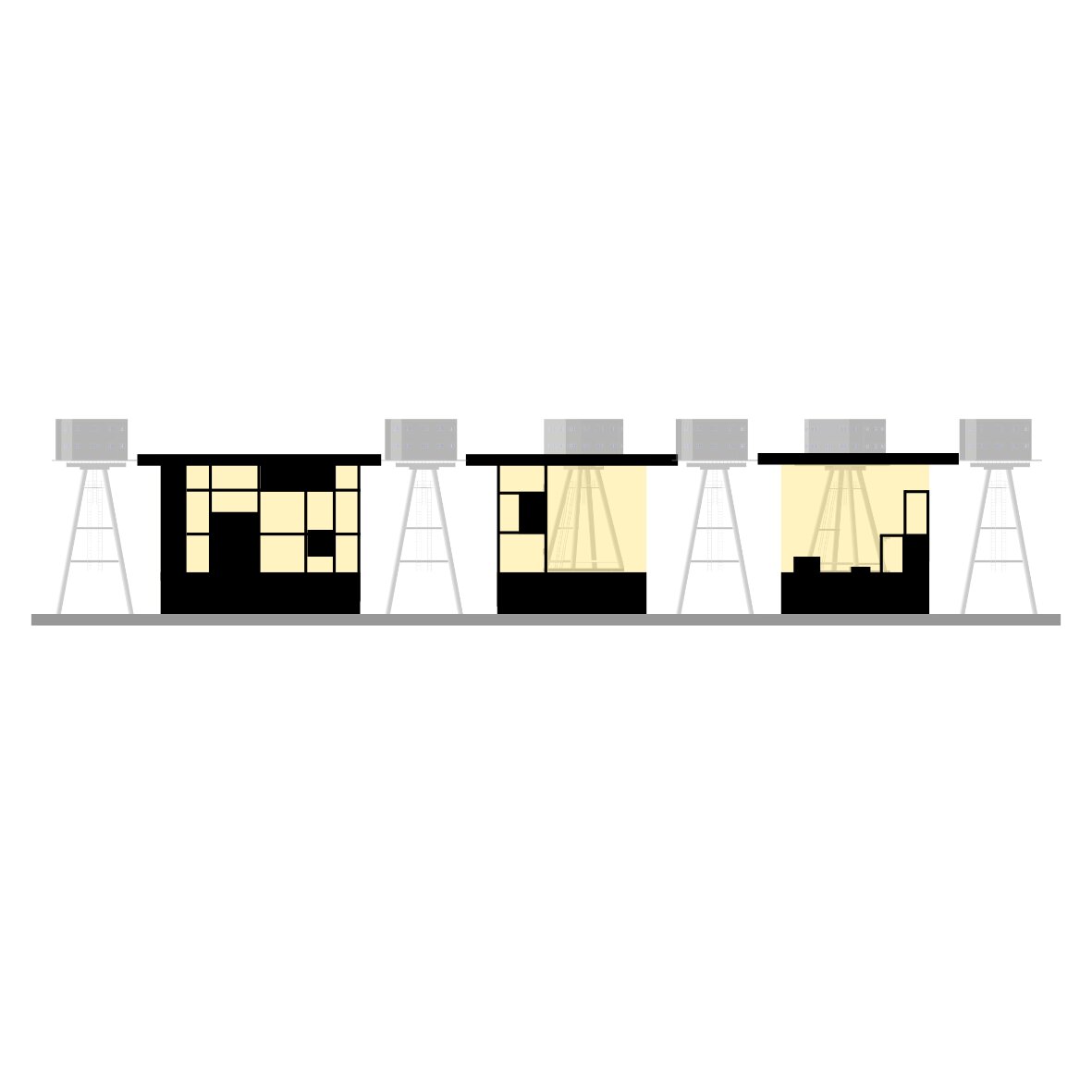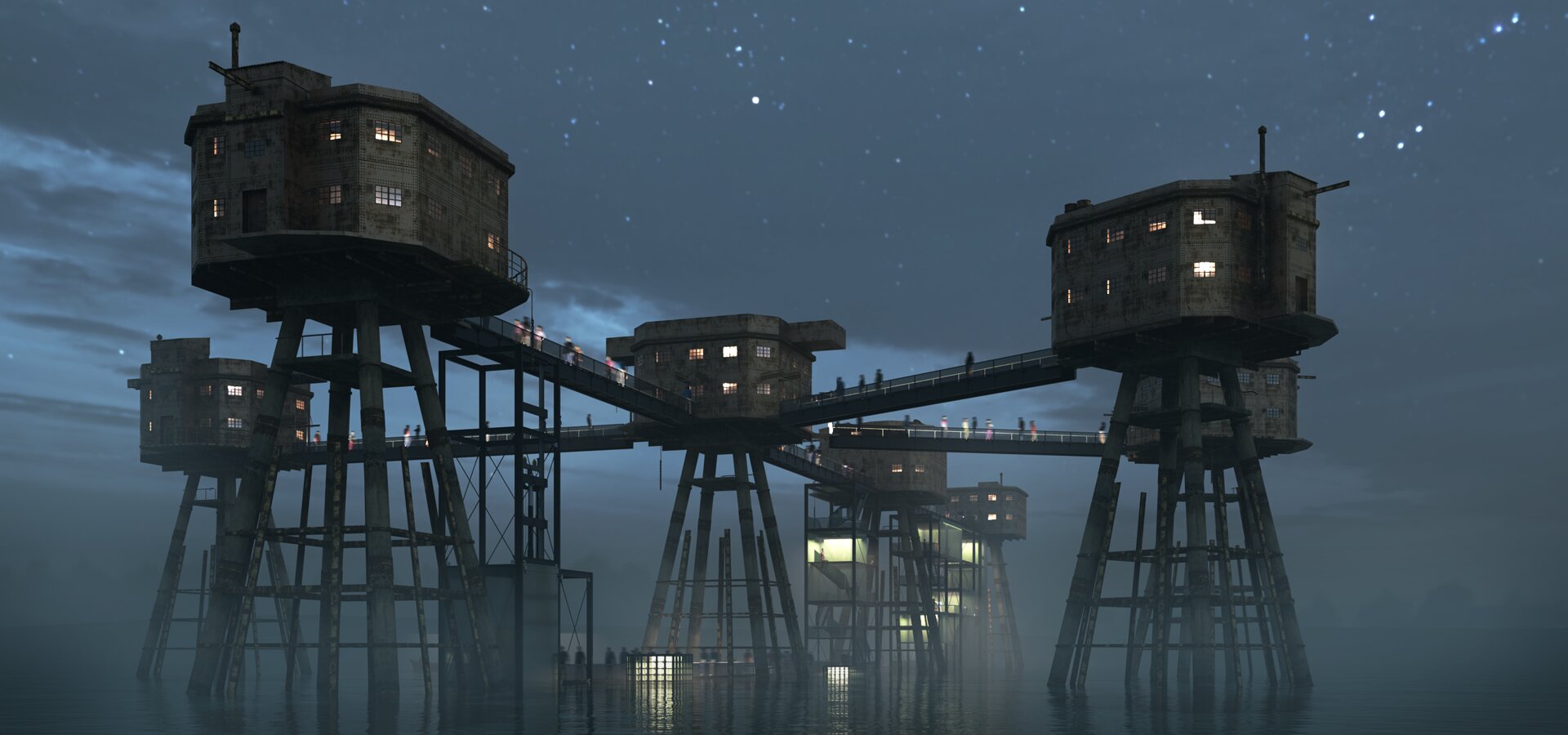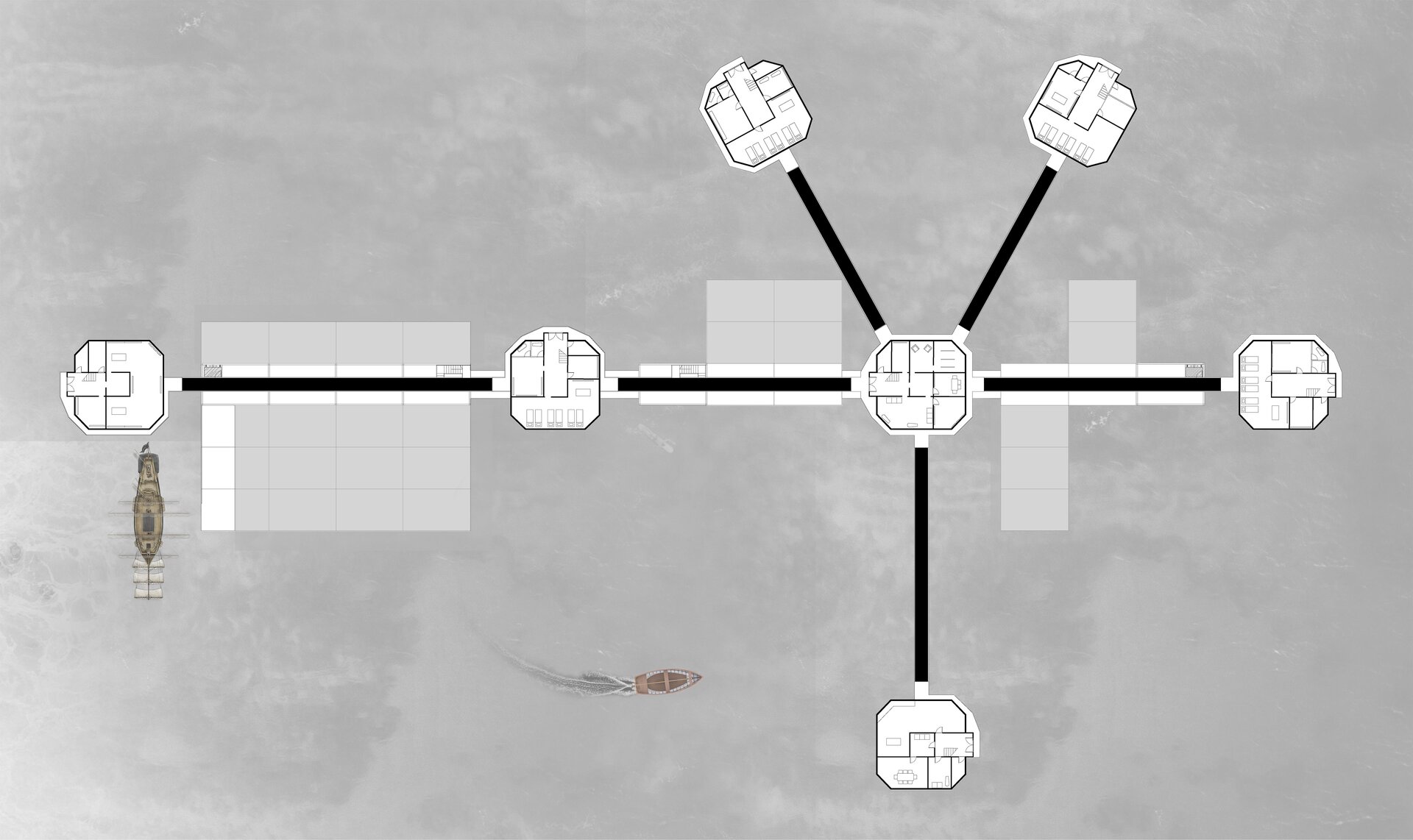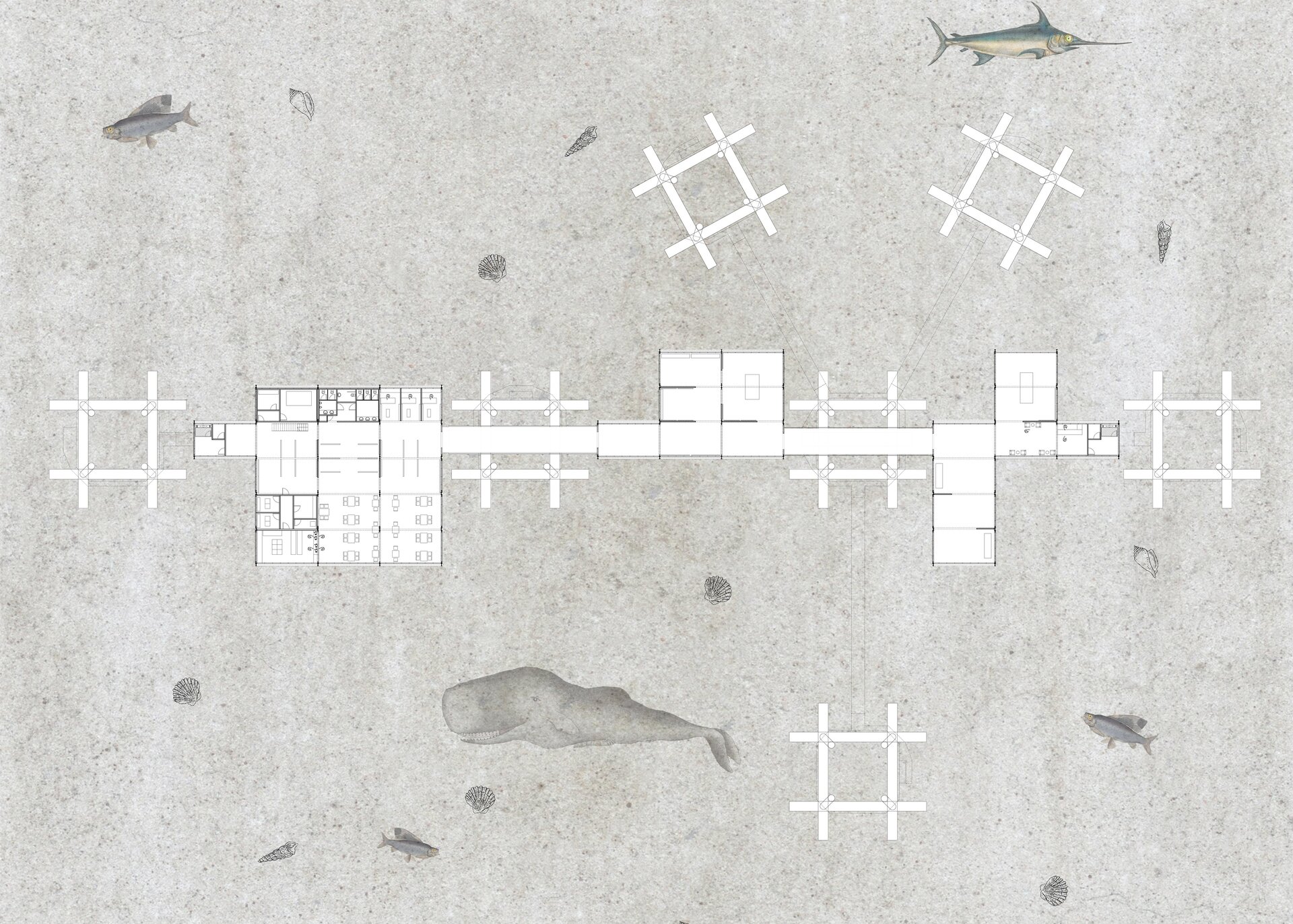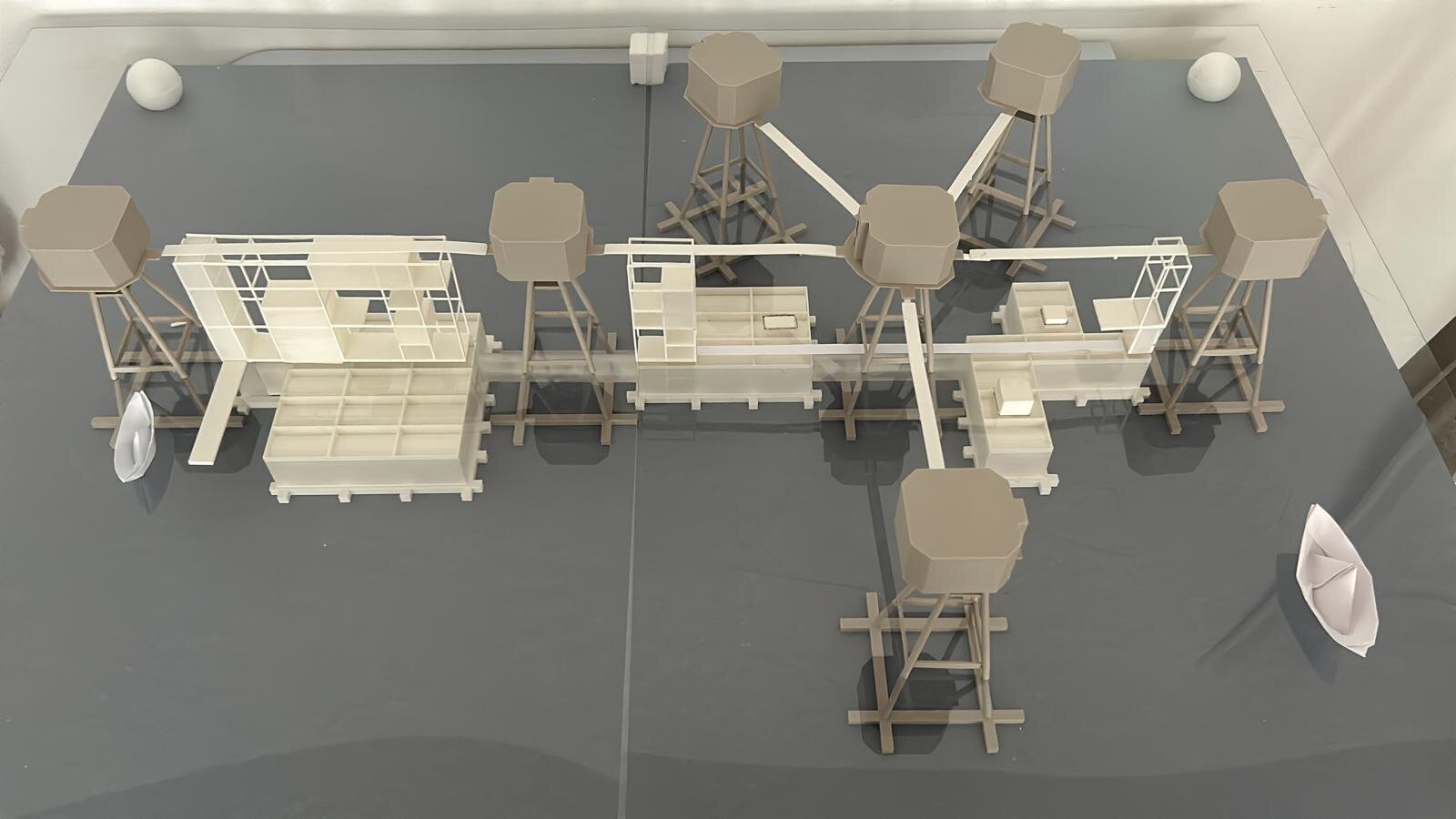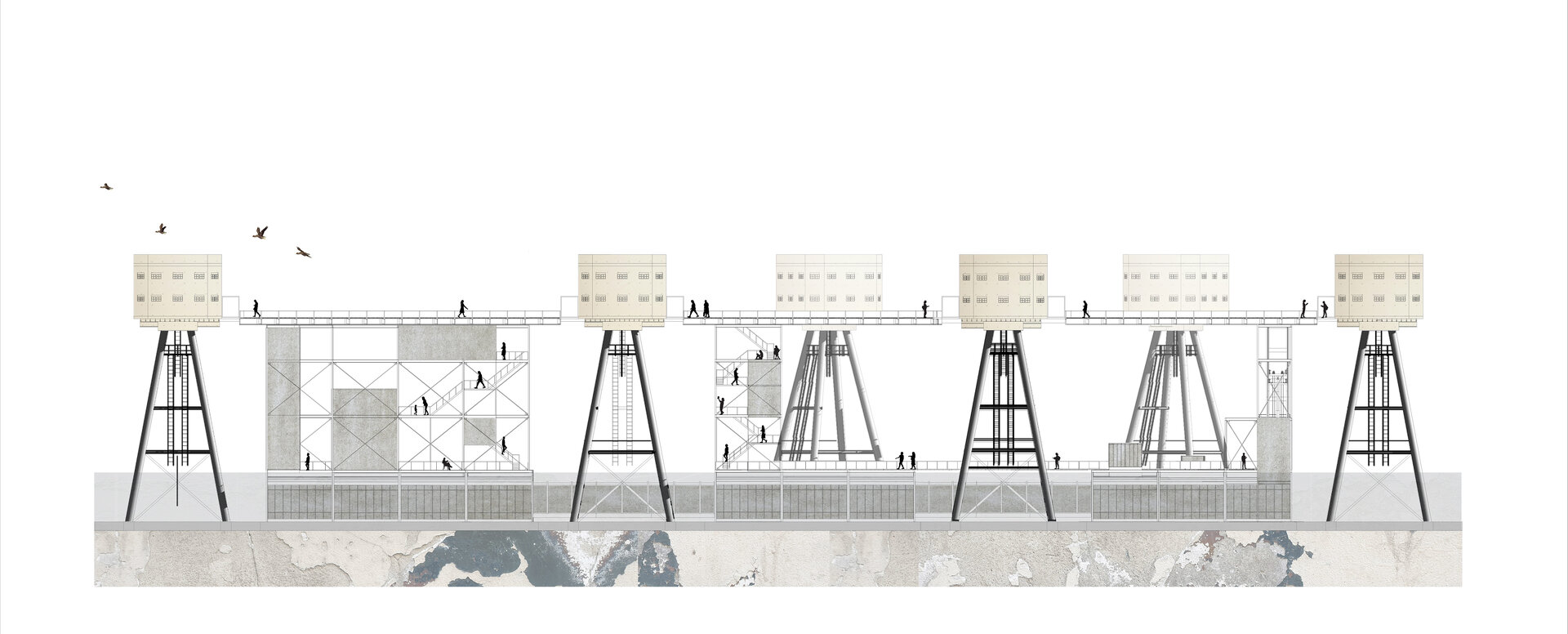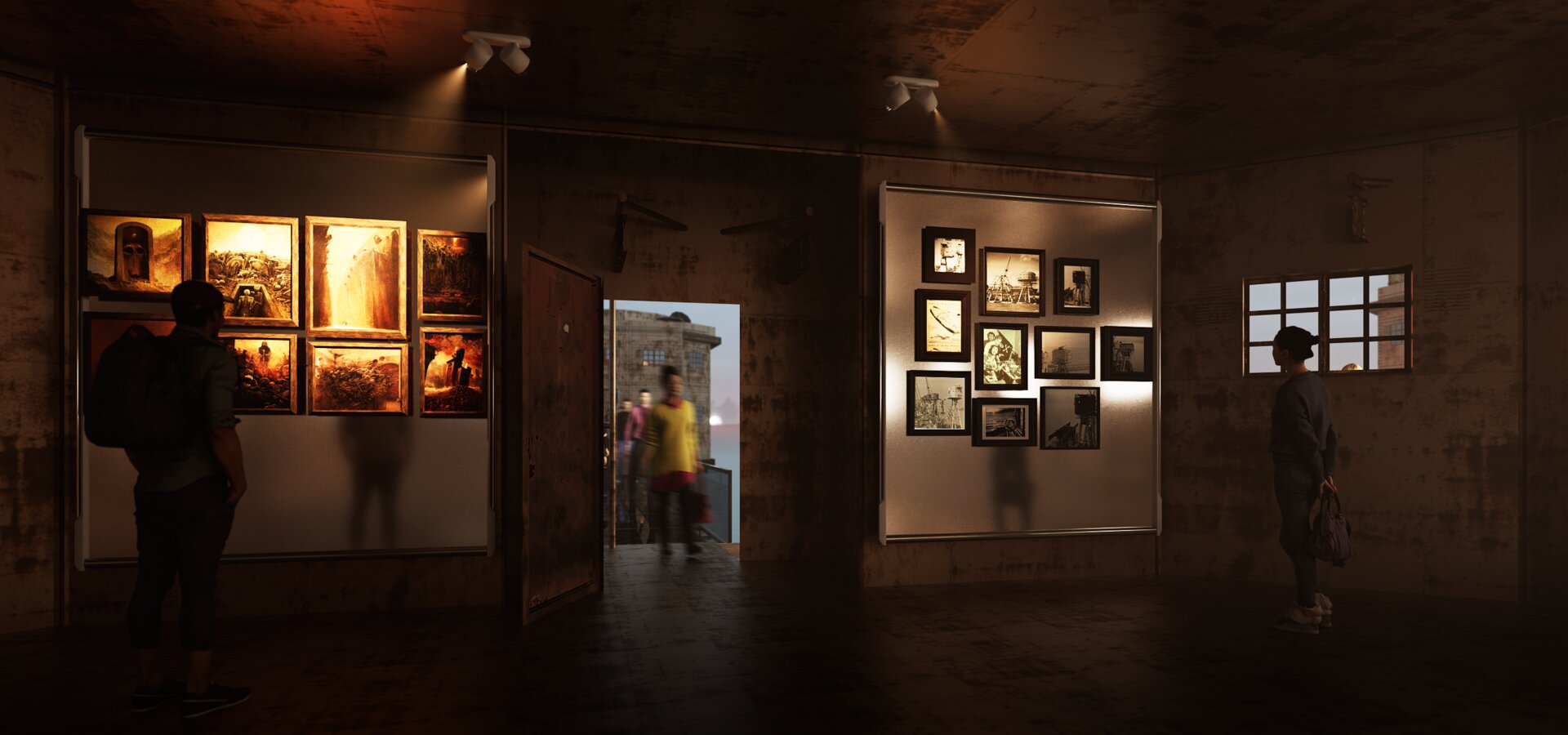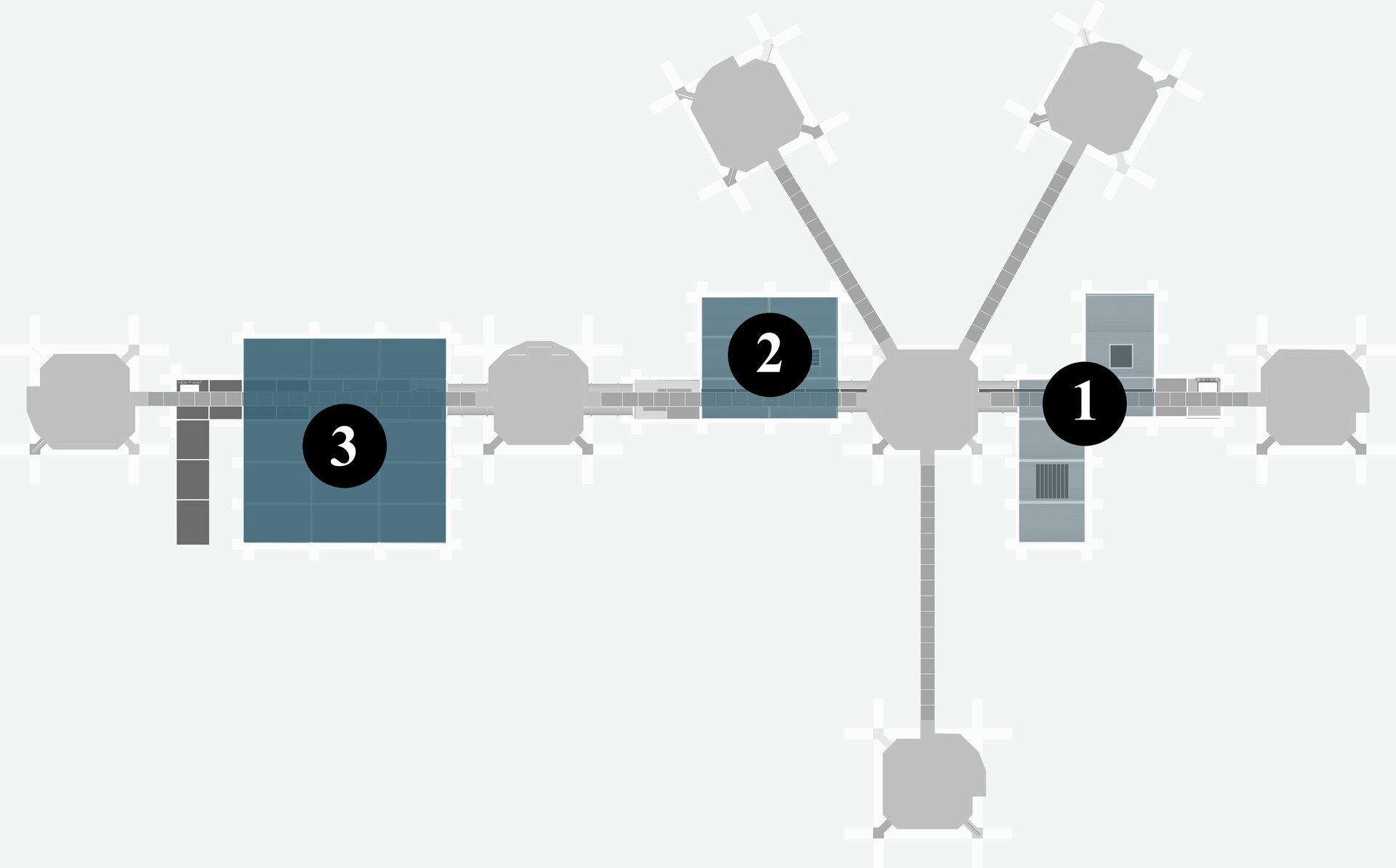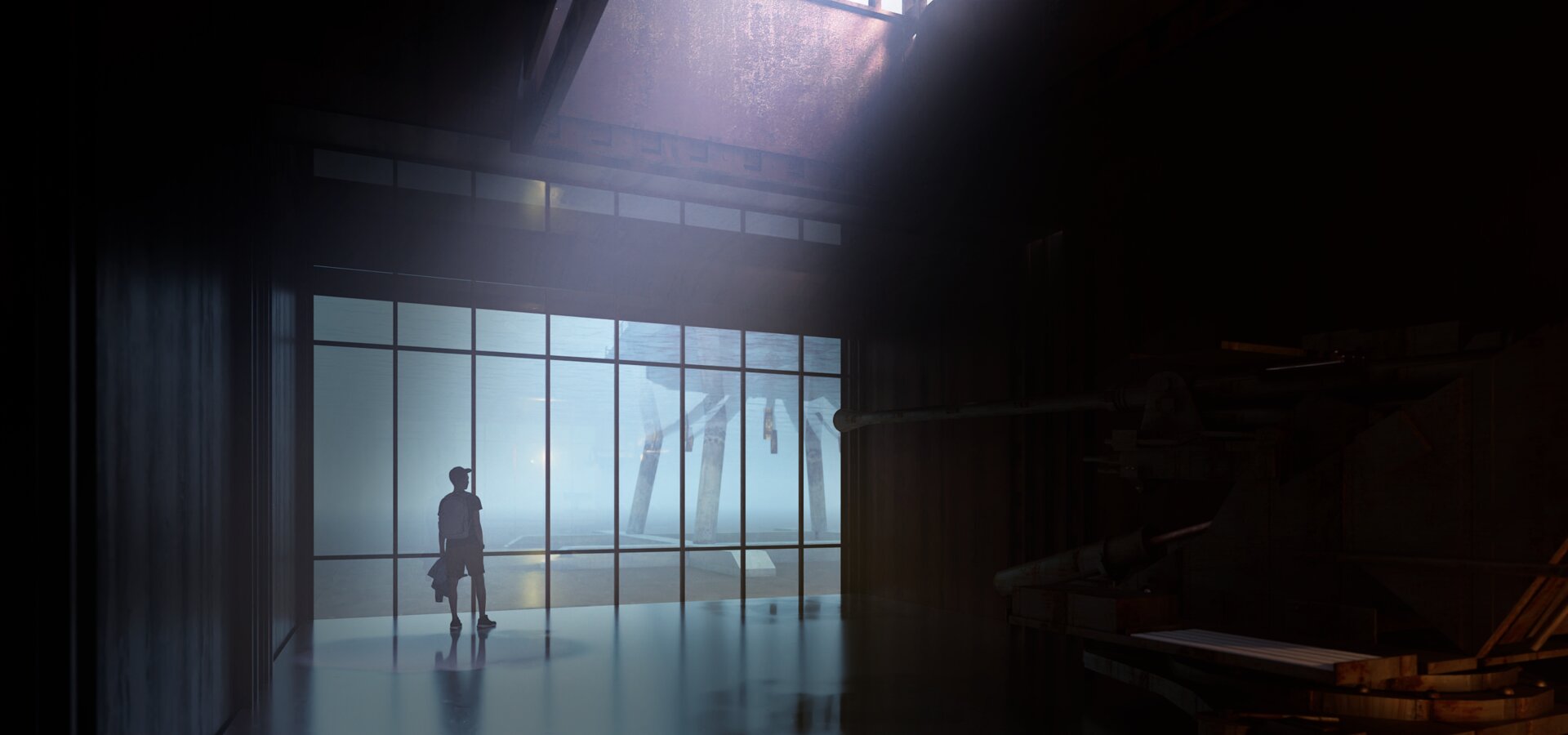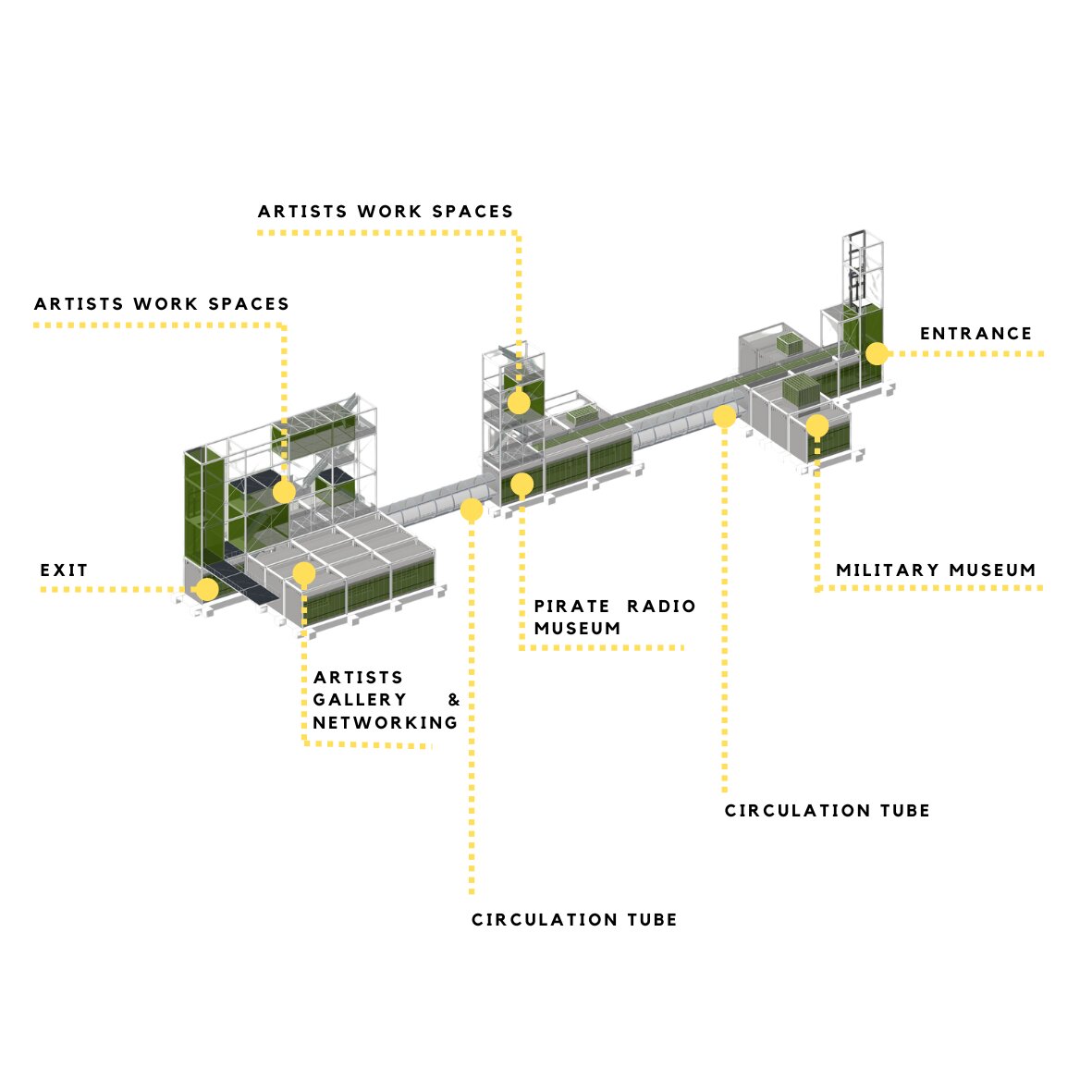
Transformation and durability: Red Sand Fort, intervention in the Thames Estuary
Authors’ Comment
The project proposes the revitalization of the Red Sand fort by creating an underwater museum. Visitors will be able to explore the underwater space, thus discovering an innovation of World War II military architecture.
During World War II, the German military began attacking British waters using a new weapon, the magnetic mine (bombs that exploded upon contact with large metal objects, such as a British ship). These attacks prompted the British Army to respond with its own innovation: the construction of multiple anti-aircraft fort complexes. The Red Sand Fort is the only one that has stood the test of time.
After the war, it was abandoned and later became an attractive site for illegal radio transmissions. For many years, the fort operated as a pirate radio station until the British government changed legislation, forcing the operators to leave.
Currently, the Red Sand Fort is in an advanced stage of degradation, but has become a fascinating point of interest for artists. Its location on the south-west coast, in the proximity of major cities, contributes to this attraction. The nearest town, Whitstable, hosts Kent’s largest community of artists, strengthening the fort's connection with the artistic world.
The defining feature of these towers is their walkways, which transformed the objects into a functional network. The project proposes to bring them back in a reinterpreted way, through a vertical development, thus creating new ways of interacting with the space, offering visitors a unique and dynamic experience. New elements, such as stairs, platforms, and enclosed spaces, foster this dialogue with the historic fort.
The low water level allows space exploration in a unique way. The underwater museum offers new perspectives on the old towers, particularly their structure and foundation.
Flexibility and adaptability are central to this project. The entire building has been designed modularly, allowing for future assembly and disassembly. In this way, the project can evolve to meet future needs, remaining relevant and functional in the long term.
- Conversion and extension of the former Bourul Factory in Bucharest. Urban Hub for students
- Reimagining the Leonida Garages - Contemporary Cultural Space Bucharest
- Lost Bucharest Museum
- Recovery of Callimachi-Văcărescu ensemble. Cultural and touristic circuit at Mănești, Prahova
- Memorial Museum of Bucharest Pogrom
- ICA - Institute of Cinematographic Arts (in Timisoara)
- Landscape habitat: Extension and conversion of the former imperial baths of Herculane
- Constanța History and Archeology Museum the New Gallery
- Extension of the Independence Cinema with a Film and Media Faculty, Târgoviște
- Agricultural Research Center in Cluj
- City and Community - Youth Community Center on Dacia Boulevard, Bucharest
- “George Coșbuc” Flower Market - Rehabilitation and Expansion
- “Baba Novac” neighborhood center - Rehabilitation of the “Rucăr” commercial complex in Balta Albă, Bucharest
- Medresa, cultural center for Medgidia’s turkish-tatar community. Reintegrating the turkish bath into the urban circuit
- Workspaces for Creative Industries. Christo Gheorgief House
- Day-Care Centre. Nifon Mitropolitul House
- Archaeology Center in the Constanța Peninsula
- Tab. Socio-cultural Incubator. Conversion of the Bucovat Tannery, Dolj
- Community Center, Ferentari
- Art school for children
- Recomposing a lost urbanity. Cultural intervention in the Historical Center of Brăila, Romania
- Factory, School, Campus. Vocational School on the Abandoned Drajna Timber Factory Site, Măneciu County
- Interactive music center
- Catechesis center on Biserica Amzei street, Bucharest
- Center of creation and contemporary culture
- Cultural center - Extension of the “Radu Stanca” National Theater in Sibiu
- Bolta Florești - Community Ensemble
- Digital Fabrication Laboratories. Adaptive reuse of the “Ciocanul” Trade School, Bucharest
- The conversion of the chapel within the former noble estate of the Csávossy family, Bobda
- The house with ogives
- Cultural Forum in Brăila
- Sportul Studențesc Palaestra
- Forest of Arts - Cultural Center & Artist Residencies Timișoara
- Transformation and durability: Red Sand Fort, intervention in the Thames Estuary
- Danube waterfront reimagined. Restoration and conversion of the former shipyard of Drobeta-Turnu Severin, RO
- Revitalization of the Neculescu Inn
- Creative and Research Hub “Unfinished Section Studio”
- Vocational School in Brasov
- Extension of the Pomiculture Research and Development Centre in Băneasa, Bucharest
- Arts and Science Park, Splaiul Unirii Bd.162, Bucharest
- Behind the apartment blocks. Urban reweaving. The Theodor Sperantia Neighbourhood
- The House of the Romanian Academy - From Object to urban fabric
- Chisinau Museum of Modern and Contemporary Art
